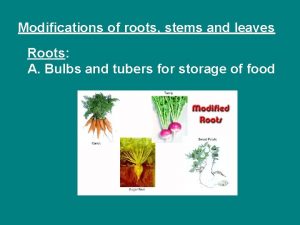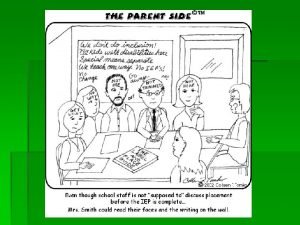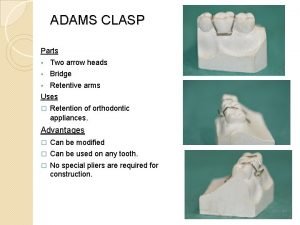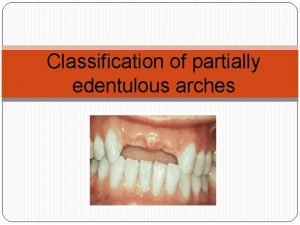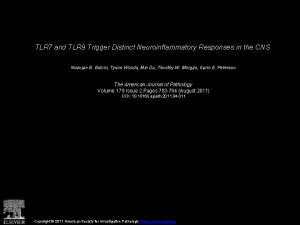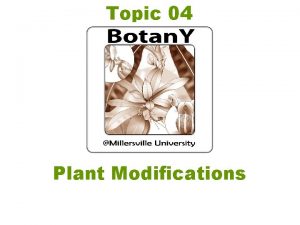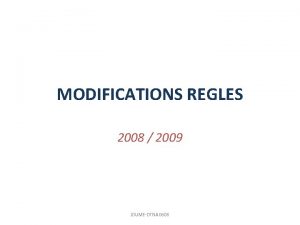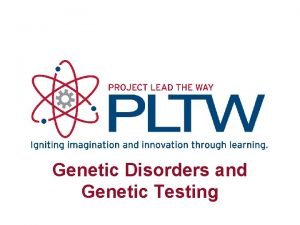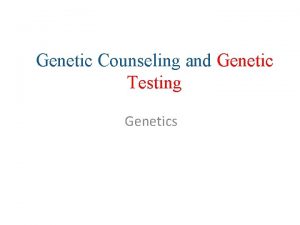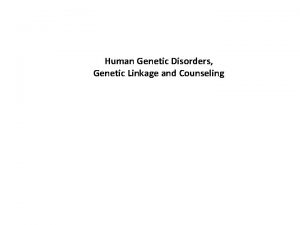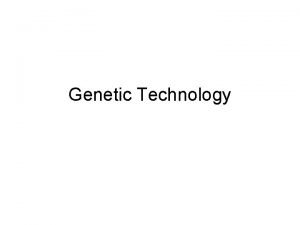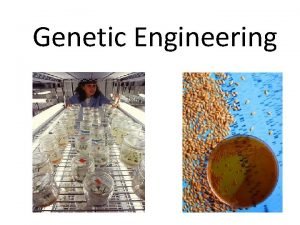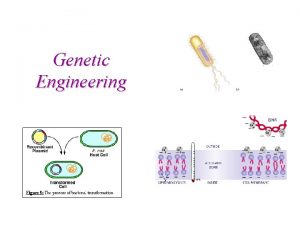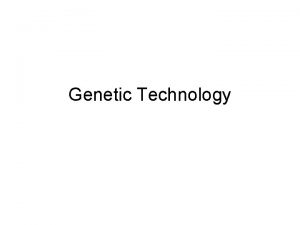Genetic modifications within TLR 4 and TLR 9

















- Slides: 17

Genetic modifications within TLR 4 and TLR 9 genes contribute into congenital toxoplasmosis and cytomegaly development Wioletta Wujcicka 1, Jan Wilczyński 1, 2, Dorota Nowakowska 1, 2 Department of Fetal-Maternal Medicine and Gynecology, Polish Mother's Memorial Hospital Research Institute, Lodz, Poland; 2 Department of Fetal-Maternal Medicine and Gynecology, IIIrd Chair of Gynecology and Obstetrics, Medical University of Lodz 1 3 rd International Conference on Clinical Microbiology and Microbial Genomics Valencia, Spain September 24 th-26 th 2014

T. gondii and HCMV infections within pregnancy Common cause of intrauterine infections T. gondii seroprevalence between 4% and 100% with values over 60% in Central and South America, Africa and Asia HCMV prevalence between 40% and 100% dependent on the continents and countries http: //scienceray. com/biology/the-parasite-toxoplasma-gondii/ Pappas G. (2009) Int J Parasitol. 39: 1385 -1394

Role of TLRs in immune response Misch EA and Hawn TR. (2008) Clin Sci. 114(5): 347 -60 Transduction of signals from PAMPs to the cell interior, activation of these cells and the first line of host defense against pathogens Important molecules activating and inducing both innate and adaptive immune response Ho J et al. (2004) Tannaffos. 3(11): 7 -14

Contribution of TLR 2, TLR 4 and TLR 9 in the immunity against T. gondii Wujcicka W et al. (2013) Eur J Clin Microbiol Infect Dis. 32(4): 503 -511

TLRs activity in the immune response against HCMV Wujcicka W et al. (2014) Pathog Dis. 70(1): 3 -16

Aims of study: v Determination of a distribution of genotypes at TLR 4 and TLR 9 polymorphic sites in fetuses and newborns congenitally infected with T. gondii v Comparison of the genotypic profiles at TLR SNPs between the offsprings with congenital toxoplasmosis and cytomegaly

Materials and Methods: Collection of clinical specimens from fetuses and newborns Samples collected retrospectively (15 T. gondii infected cases and 23 controls) and prospectively (three T. gondii infected cases and 18 controls) Fifteen (15) fetuses and newborns with HCMV infection and 18 control cases of HCMV-seronegative status http: //protoplasmix. wordpress. com/tag/toxoplasma-gondii/ Eighteen (18) fetuses and newborns with congenital toxoplasmosis and 41 control cases without T. gondii intrauterine infection

Classification of clinical specimens for molecular studies Serological screening: Screening for T. gondii Ig. G and Ig. M antibodies as well as Ig. G avidity performed with an enzyme-linked fluorescent assay (ELFA) (Vidas Toxo Ig. G II; Ig. M; or Ig. G Avidity, bio. Mérieux, France) HCMV screening with Eti-Cytok G-Plus and Eti-Cytok M-Reverse Plus tests (Diasorin/Biomedica, Italy) used between 2000 and 2001, VIDAS CMV Ig. G and Ig. M tests (bio. Mérieux, France) between 2001 and 2006, anti-CMV Ig. G and Ig. M tests (Diasorin/Biomedica, Italy) between 2006 and 2011 years and ELFA assays from 2012 year Clinical symptoms observed in pregnant women and their fetuses: Flu-like symptoms in mothers Ultrasound markers in fetuses with toxoplasmosis: hydrocephalus, chorioretinitis, cerebral calcification and stroke, as well as microcephaly, hepatosplenomegaly, fetal hydrops and IUGR Ultrasound markers in fetuses with cytomegaly: ventriculomegaly, hydrocephalus and fetal hydrops as well as IUGR, ascites, pericardial effusion, cardiomegaly and the presence of hyperechogenic foci in different organs like the fetal brain, liver and pancreas

Detection and quantification of T. gondii and HCMV DNA Locus Gene AF 179871 B 1 Sequences of primers and probe (5' → 3’) Gen. Bank Annealing temperature (o. C) PCR product (bp) CAAGCAGCGTATTGTCGAGTAGAT GCGTCTCTTTCATTCCCACATTTT AF 179871 60 83 6 -FAM- CAGAAAGGAACTGCATCCGTT-NFQ Amplification of HCMV UL 55 gene fragments of 150 bp using primers and probes of the following sequences: 5’-GAGGACAACGAAATCCTGTTGGGCA-3’, 5’-TCGACGGTGGAGATACTGCTGAGG-3’, and 5’-6 -FAM-CAATCATGCGTTTGAAGAGGTAGTCCA-TAMRA-3’

Genotyping of SNPs located at TLR 4 and TLR 9 genes Gene SNP name TLR 4 896 A>G Primer sequences (5'-3') External (rs 4986790) For: AAAACTTGTATTCAAGGTCTGGC Rev: TGTTGGAAGTGAAAGTAAGCCT Internal For: AGCATACTTAGACTACTACCTCCATG Rev: AGAAGATTTGAGTTTCAATGTGGG 1196 C>T External (rs 4986791) For: AGTTGATCTACCAAGCCTTGAGT Rev: GGAAACGTATCCAATGAAAAGA Internal For: GGTTGCTGTTCTCAAAGTGATTTTGGGAGAA Rev: ACCTGAAGACTGGAGAGTTAAATGCT TLR 9 1635 G>A External (rs 352140) For: GTCAATGGCTCCCAGTTCC Rev: CATTGCCGCTGAAGTCCA Internal For: AAGCTGGACCTCTACCACGA Rev: TTGGCTGTGGATGTTGTT Annealing temperature [o. C] 52 Amplicon Restriction length enzyme (bps) 355 61 188 52 510 59 407 52 292 59 Profile (bps) 177 Nco. I AA: 188 AG: 188, 168, 20 GG: 168, 20 Hinf. I CC: 407 CT: 407, 378, 29 TT: 378, 29 Bst. UI GG: 135, 42 GA: 177, 135, 42 AA: 177 Sequencing of randomly selected PCR products for distinct genotypes at TLR 4 896 A>G, TLR 4 1196 C>T and TLR 9 1635 G>A SNPs

Results: Products of multiplex nested PCR-RFLP analysis of TLR 4 and TLR 9 SNPs Agarose gel electrophoresis of PCR-RFLP products for profiling of genotypes at TLR 4 896 A>G SNP (A), TLR 4 1196 C>T SNP (B) and TLR 9 1635 G>A SNP (C)

Sequencing of the selected amplicons for TLR 4 and TLR 9 SNPs Chromatograms for DNA fragments encompassing TLR 4 896 A>G SNP (A, B), TLR 4 1196 C>T SNP (C, D) and TLR 9 1635 G>A SNP (E-G)

Relationship between TLR polymorphisms and congenital toxoplasmosis Genotype frequencies; n (%)a Gene polymorphism Genetic model Genotype Infected cases Seronegative controls ORb (95% CI)c P-valued --- AA AG 17 (94. 4%) 1 (5. 6%) 19 (95%) 1 (5%) 1. 00 1. 12 (0. 06 -19. 28) 0. 94 --- CC CT 17 (94. 4%) 1 (5. 6%) 18 (90%) 2 (10%) 1. 00 0. 53 (0. 04 -6. 39) 0. 61 Codominant AA GA GG 3 (16. 7%) 11 (61. 1%) 4 (22. 2%) 8 (40%) 10 (50%) 2 (10%) 1. 00 2. 93 (0. 60 -14. 23) 5. 33 (0. 62 -45. 99) 0. 230 Dominant AA GA-GG 3 (16. 7%) 15 (83. 3%) 8 (40%) 12 (60%) 1. 00 3. 33 (0. 72 -15. 37) 0. 110 Recessive AA-GA GG 14 (77. 8%) 4 (22. 2%) 18 (90%) 2 (10%) 1. 00 2. 57 (0. 41 -16. 12) 0. 300 Overdominant AA-GG GA 7 (38. 9%) 11 (61. 1%) 10 (50%) 1. 00 1. 57 (0. 43 -5. 71) 0. 490 Log-additive --- --- 2. 40 (0. 83 -6. 95) 0. 090 TLR 4 896 A>G TLR 4 1196 C>T TLR 9 1635 G>A n, number of tested fetuses and newborns; b OR, odds ratio; c 95% CI, confidence interval; d logistic regression model; P≤ 0. 050 is considered as significant a

Frequencies of alleles at TLR 4 and TLR 9 SNPs No. a of carriers with TLR alleles (%) Gene polymorphism TLR 4 896 A>G Alleles TLR 4 1196 C>T Alleles TLR 9 1635 G>A Alleles a P-valueb Congenital toxoplasmosis Seronegative control A G 35 (97. 2) 1 (2. 8) 39 (97. 5) 1 (2. 5) 0. 940 C T 35 (97. 2) 1 (2. 8) 38 (95. 0) 2 (5. 0) 0. 619 G A 19 (52. 8%) 17 (47. 2%) 14 (35. 0%) 26 (65. 0%) 0. 118 No. , number; b Pearson's Chi-squared test; P ≤ 0. 050 is considered as significant

Genotypic profiles at TLR 4 and TLR 9 SNPs in congenital toxoplasmosis and cytomegaly Significantly less frequent GC haplotype at TLR 4 SNPs in congenital toxoplasmosis than in cytomegaly (P≤ 0. 0001) GC haplotype at TLR 4 SNPs and multiple GCG genotypes at TLR 4 and TLR 9 SNPs significantly more frequent in congenitally infected than control cases (P≤ 0. 0001)

Conclusions Genetic modifications within TLR 4 and TLR 9 genes might contribute to congenital toxoplasmosis and cytomegaly

Thank You for Your attention!
 Founder effect genetic drift
Founder effect genetic drift Genetic programming vs genetic algorithm
Genetic programming vs genetic algorithm Genetic programming vs genetic algorithm
Genetic programming vs genetic algorithm Genetic drift
Genetic drift What is the difference between genetic drift and gene flow
What is the difference between genetic drift and gene flow What is modification of roots
What is modification of roots Accommodations and modifications
Accommodations and modifications Difference in accommodations and modifications
Difference in accommodations and modifications Accommodation vs modification
Accommodation vs modification Transfer lifting repositioning
Transfer lifting repositioning Transferring lifting repositioning
Transferring lifting repositioning Tlr
Tlr Tlr
Tlr Blackhawk king air 350
Blackhawk king air 350 Modified crib clasp
Modified crib clasp Concordance des temps discours indirect
Concordance des temps discours indirect Applegate rules for kennedy classification
Applegate rules for kennedy classification Accommodations vs modifications chart
Accommodations vs modifications chart





